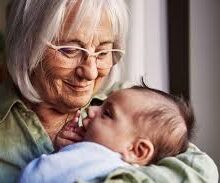Search

As family dynamics shift, grandparents are emerging as central pillars in grandchildren’s development—offering vital emotional, financial, and caregiving support. Several notable trends underscore this transformative role:
Longer life expectancies and declining birth rates mean grandparents now have fewer grandchildren and more years to share with them, fostering richer relationships Vox.
Driven by soaring childcare costs and overtaxed parents, many grandparents are stepping in out of necessity, not just affection. This unpaid yet crucial support often comes at personal cost—retirement plans, finances, or well-being are frequently sidelined The GuardianVox.
Grandparents, even those working full-time, are increasingly providing extensive care—taking on tasks from daily routines to after-school help PMCVox.
Tech-savvy grandparents are forging new paths—embracing video calls, messaging, VR, and AR to stay emotionally connected and engage in storytelling or playful experiences from afar Number AnalyticsarXiv+1.
A growing number of grandparents are embracing modern, personalized nicknames—like “Glam-Ma” or “Grandude”—reflecting their active lifestyle and rejecting old stereotypes Adelaide Now.
Warm, affectionate grandparent–grandchild relationships support emotional security and healthier habits over time. Closer bonds correlate with better socioemotional well-being in grandchildren, while relational conflicts can contribute to behavioral challenges WikipediaMDPI+1.
Globally, grandparent involvement varies by culture. In parts of Asia (e.g., China, Singapore, Hong Kong), multigenerational childcare is widespread—even when parents are present—whereas in Western nations it’s more often a response to crisis MDPIWikipedia.
Kinship care programs exist—like the U.S. National Family Caregiver Support Program, which offers counseling, respite, and financial literacy training—but many grandparents still fall through the cracks due to inconsistent recognition of their caregiving burden Wikipedia.
Emerging Trends Show Grandparents as Central Catalysts in Their Grandchildren’s Growth